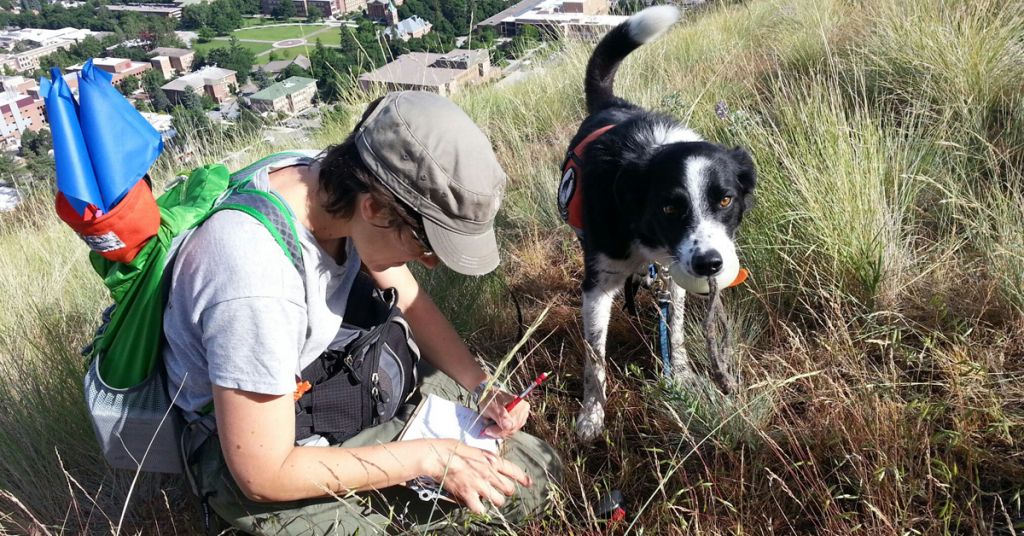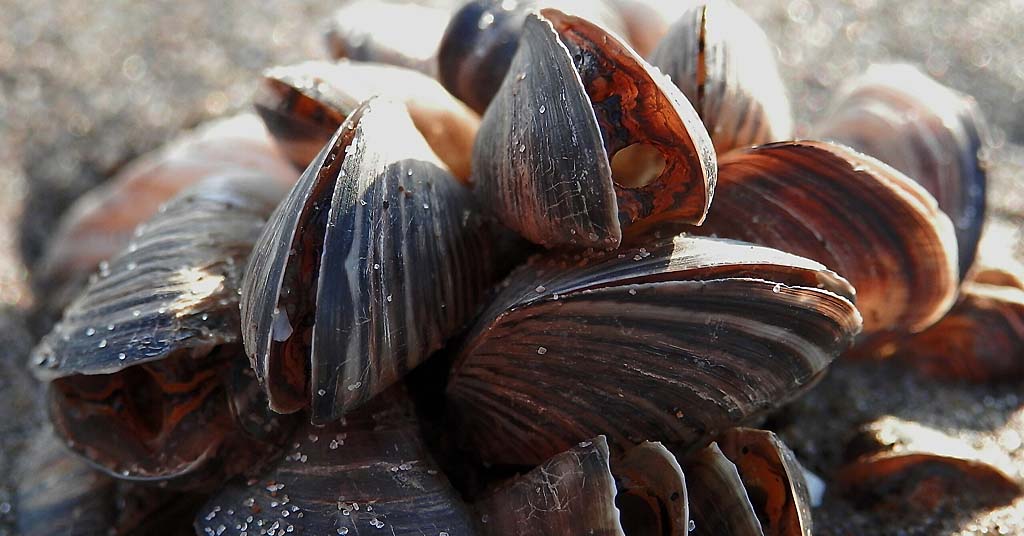Fewer than one in 1,000 qualify for a program that trains dogs to sniff out invasive, non-native plants

Heaven sent: Working Dogs for Conservation sends the world’s most dynamic snouts in search of invasive plants. Photo: K. Burns/WD4C.org
By Jordan Rane, October 21, 2021. Guiding, herding, retrieving, rescuing, therapy’ing, sniffing out contraband, fetching slippers—dogs can be pretty impressive workers.
Now an elite pack of conservation-oriented canines is directing its snouts toward rooting out invasive wild plant species that threaten vulnerable Western ecosystems.
Along Wyoming’s Snake River, Working Dogs for Conservation (aka WD4C) works with a team of highly trained, weed-sniffing canines.
“We’re currently in the eradication phase with both pepperweed and saltcedar in our targeted areas,” says Pete Coppolillo, the nonprofit’s executive director. “It’s not hyperbole—a dog’s nose is the most extraordinary chemical sensor the world has ever known. Not just because it’s super-sensitive, but because it’s mounted on this highly mobile, motivated, intelligent, trainable animal.”
MORE: 3 ways to restore ecosystems with native plants
Pepperweed, a wispy, white-flowered Eurasian soil disrupter, has been on the verge of becoming dominant along stretches of the Snake River. Saltcedar (aka tamarisk) creates large salt deposits that have significantly leached soil nutrients and lowered water tables on portions of the Snake and other vital Western waterways, notably the Green River, a principal tributary of the Colorado River.
Amazingly, WD4C dogs can sniff out these plants before they even emerge from the ground.
One in 1,000 make cut
Based in Missoula, Mont., WD4C’s invasive plant-tracking program may be the most novel and challenging scent-and-destroy mission yet for a highly trained canine.
It’s the latest chapter for the organization, which calls itself the “world’s leading conservation detection dog organization.”
That’s not just a cute calling card begging for a future Pixar film. For 25 years, the organization has been engaged in a variety of scent-hunting conservation jobs. They’ve worked across the United States and as far afield as Tanzania, Costa Rica and the Falkland Islands.

Hey, seed! Here on a gig in Iowa, yellow lab Lily is now retired from WD4C duty. Photo: K. Burns/WD4C.org
Redirecting a working dog’s talents toward wild plants doesn’t make for an easy gig for a working canine. Joining the WD4C plant-sniffing squad—comprised entirely of rescue dogs, and largely mutts—sounds as tough as Delta Force application odds.
“Less than one in a thousand dogs screened for the program will ultimately make the cut this sort of work,” says Coppolillo.
The organization’s earliest canine conservation missions date to the late 1990s, when dogs were used to track grizzlies in British Columbia’s Okanagan Valley.
“Dogs naturally read signals from other carnivores, so tracking down bear scat or wolf scat makes far more sense to them than plants,” says Coppolillo. “While you can train a dog on a new scent in an afternoon, it takes a much higher level of specialized training to get them to actually care about a plant. Often at least five to six weeks with the right dog.”
Woad win
In addition to current success managing saltcedar and pepperweed along the Snake River in Wyoming, WD4C dogs have been highly effective detecting a variety of invasive flora.
Cultivated by early Western settlers as a natural dye source, dyer’s woad, an aggressive intermountain weed, is another ongoing target.

Woad trip: WD4C pooch Orbee and handler Dalit Guisco locate dyer’s woad on Mount Sentinel in Missoula. Photo: WD4C.org
“Dyer’s woad is super-invasive—it just takes over. Northern Utah is covered with the stuff,” says Coppolillo, whose dogs have effectively weeded it out of infested areas in and around Missoula. “Early on, we were doing numerous human weed-pull days and just not getting ahead of it.”
Then they brought in the dogs.
“Our dogs found hundreds of dyer’s woad plants for the first few years,” says Coppolillo. “Now they’ll find maybe a dozen of them. We’re waiting for the last few viable seeds to come out and then we’ll declare victory.”
Big need, few resources
In addition to invasive species, WD4C has pioneered methods of training canines to detect invasive animals, fish and insects, as well as illegal snares, poisons, guns and ammunition in Africa to curb wildlife trafficking.

Sniff test: WD4C dogs travel the world. Photo: K. Burns/WD4C.org
They’ve also used their dogs to protect certain plant species—such as Kincaid’s lupine, a prairie wildflower in Oregon’s Willamette Valley that’s a vital nesting place for the endangered Fender’s blue butterfly. In that case, dogs identified plants to be located and safeguarded.
“We do similar work with monarch butterfly habitat in another part of the world,” says Coppolillo.
MORE: Invasive plant species are decimating Oregon’s rangeland
Subsisting on individual donations, government and foundation grants, and some fee-for-service work, WD4C’s clients have included the National Park Service, The Nature Conservancy and a number of state agencies and universities.
Which problem plants will the dogs descend upon next?
“There’s so many people who want us to work on invasive plants—and, strangely, so little money for it,” says Coppolillo. “I don’t understand why that is, especially when you consider how huge the economic implications of invasive species can be.
“I’m not a botanist, but I believe there are a ton of such cases in the Columbia River Basin we’d love to help out with.”
Columbia Insight contributing editor Jordan Rane is an award-winning journalist whose work has appeared in CNN.com, Outside, Men’s Journal and the Los Angeles Times.










What a great story! This takes the (arguable) fun level of tracking down noxious weeds to a new pinnacle. Wonder if I can get Shadow to sign on…